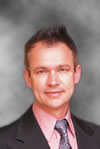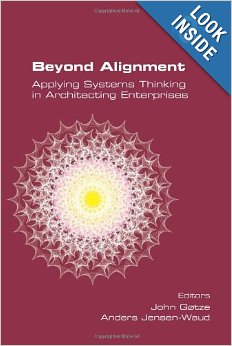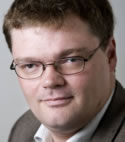
Architecture Friday
26 June 2009 (10.00-16.30h)
Location: Crowne Plaza Antwerpen (Antwerp, Belgium)
Presented in English by
Price: 250 EUR (excl. 21% VAT)

This event is history, please check out the List of Upcoming Seminars, or send us an email
Check out our related in-house workshops:
- Google BigQuery in Practice (INHOUSE WORKSHOP - On Request)
Learning Objectives
About this seminar
The value of enterprise architecture (EA) as a technical framework for managing and delivering large ICT programs has been proven and is no longer in question. However, we come to the stunning observation that although the ICT projects are becoming larger and more complex in the globalized new economy, senior business managers have not yet adopted enterprise architecture as a useful decision support tool. During this seminar, we will look at what is holding them back and how next-generation enterprise architectures can overcome this problem.
This seminar is a rare opportunity to hear 3 experts in the field of EA at a single event:
- Pat Turner, CEO of the Australian company Architecture Services (ASPL) Pty Ltd, who is currently EA Manager of Ipswitch City Council
- Peter Bernus, who is currently an Associate Professor at the Australian Griffith University, where he is teaching in the Masters of Enterprise Architecture program.
- John Gøtze, co-author of the upcoming book on "Coherency Management" and President of the Association of Enterprise Architects (a|EA)
We have the opportunity of having these excellent speakers at a seminar in Belgium, because they are all involved in the ICE’09 (International Conference on Concurrent Enterprising) workshop in the Netherlands about Interoperability and Next-Generation Enterprise Architecture on June 23-24. Peter Bernus is co-chairing that workshop, and Pat Turner and John Gøtze are in the International Program Committee.
During this seminar, we will discuss what is holding business managers back on the use of enterprise architecture as a strategic decision support tool and how next-generation enterprise architectures can overcome this problem.
Hence, we will take a look at:
- The status of EA in practice today
- How EA this helps to align strategy, business and technology
- The shortcomings of today's EA in decision support
- A critical look at a number of EA-efforts around the world
- A coherency management framework
- EA as a way to manage change
- The evolving role of the enterprise architect
Who should attend ?
This seminar is particularly useful for anyone who is (or wants to be) involved in enterprise architecture, or has to deal with EA and enterprise architects. This includes, but is not restricted to Business Managers, Program Managers, Technology Managers, Technical Staff, ...
Check out the full programme here.
Full Programme
Pat Turner will discuss some of his experiences in designing, implementing and reviewing enterprise architectures. You will learn the current state-of-the-art in enterprise architecture and the way this helps to align strategy, business and technology. You will also learn the shortcomings of today's enterprise architectures, in particular in the use of EA by senior management to make strategic decisions.
![]() John Gøtze will introduce central concepts from the new book Coherency Management - Architecting the Enterprise for Alignment, Agility and Assurance. The presentation will focus on 'coherency management' as the primary goal of EA. By establishing a coherency management capability as part of their EA approach, enterprises can bring together the enterprise's strategic, business and technology dimensions, and in doing so, create a coherent enterprise based on the three core values alignment, agility and assurance. Taking a critical look at a number of EA-efforts in various enterprises around the world, John will demonstrate that coherency must be a major concern for enterprise architects. A coherency management framework will be introduced and its use demonstrated though real-life cases.
John Gøtze will introduce central concepts from the new book Coherency Management - Architecting the Enterprise for Alignment, Agility and Assurance. The presentation will focus on 'coherency management' as the primary goal of EA. By establishing a coherency management capability as part of their EA approach, enterprises can bring together the enterprise's strategic, business and technology dimensions, and in doing so, create a coherent enterprise based on the three core values alignment, agility and assurance. Taking a critical look at a number of EA-efforts in various enterprises around the world, John will demonstrate that coherency must be a major concern for enterprise architects. A coherency management framework will be introduced and its use demonstrated though real-life cases.
![]() In the afternoon session, Peter Bernus looks at EA as a way to manage change and in general a way to enable the development of enterprises (not just IT/IS). It is a well known paradigm that every architecture artifact must address one or more stakeholder concerns. Peter explores two problems and suggested solutions for the EA work. The first problem is: how to ensure that the artifacts (models and descriptions) created in the EA process adequately address real stakeholder concerns. The second problem concerns the future of information management in EA. The present state-of-the-art and future trends are explored, with special consideration of the dynamics of change. Peter strongly makes the case for the need of enterprise to be "designed" and envisions the evolving role of enterprise architect in this context.
In the afternoon session, Peter Bernus looks at EA as a way to manage change and in general a way to enable the development of enterprises (not just IT/IS). It is a well known paradigm that every architecture artifact must address one or more stakeholder concerns. Peter explores two problems and suggested solutions for the EA work. The first problem is: how to ensure that the artifacts (models and descriptions) created in the EA process adequately address real stakeholder concerns. The second problem concerns the future of information management in EA. The present state-of-the-art and future trends are explored, with special consideration of the dynamics of change. Peter strongly makes the case for the need of enterprise to be "designed" and envisions the evolving role of enterprise architect in this context.
Speakers

Peter Bernus graduated from Budapest Technical University as an engineer in electronic technology in 1976. He started working at the Mechanical Engineering Automation Division Computer and Automation Institute of the Hungarian Academy of Sciences. In 1990 he became a research officer at the Computer Science Department of the Queensland University in Australia. He is currently an Associate Professor at Griffith University, where he is teaching in the Masters of Enterprise Architecture program.
Since 1976, he has worked internationally on various aspects of enterprise integration as a researcher, consultant, project leader and trainer for industry for a wide range of organisations internationally. Dr. Bernus is also series editor for Springer Verlag, managing editor of the Handbook on Enterprise Architecture and the Handbook on Architectures of Information Systems, and is member of the editorial boards of several international journals. He is past chair of the IFIP-IFAC Task Force for Architectures for Enterprise Integration, which developed the Generalised Enterprise Reference Architecture and Methodology (GERAM) framework that generalizes the requirements of Enterprise Reference Architectures (ISO 15704:2000).
Peter Bernus' research interests are in Enterprise Modelling, Enterprise Integration and Architectures for Enterprise Integration. Special interests include inter- and intra-organisational management, global enterprise networks, and dynamic project enterprises. He also has special interest in computer-mediated communication between people and ways to achieve common understanding.
Pat Turner is the CEO of Architecture Services (ASPL) Pty Ltd in Brisbane, Australia. He is currently EA Manager of Ipswitch City Council. Architecture Services (ASPL) was co-founded in 2006 by Patrick Turner, and he has successfully delivered engagements for small, medium and large enterprises both in Australia and abroad.


Dr John Gøtze is an independent consultant and writer, and the former Chief Editor of the Journal of Enterprise Architecture, the "pracademic" (combining practitioner and academic papers) publication of the AEA, the Association of Enterprise Architects. He is a co-founder of EA Fellows, a group of Danish enterprise architecture professionals. John has worked with government technology, enterprise architecture and open standards for more than 15 years. He is also a non-tenured associate professor at Copenhagen Business School and at the Danish IT University, where he has been teaching an enterprise architecture masters class for three years. He is also a staff member of OASIS, the Organization for the Advancement of Structured Information Standards. He is also a member of the Open Policy Group.
As chief consultant and enterprise architect at the National IT and Telecom Agency in Copenhagen from early 2001 to late 2005, Dr Gøtze was involved with developing the Danish national policy for a government-wide enterprise architecture. He was responsible for the Danish interoperability framework, which recommends government to adopt a service-oriented architecture and open standards. In the EU, he has been involved with developing the European Interoperability Framework under the Europe 2005 programme. From 1997-2001, he worked for the Swedish government as head of section in the Swedish Agency for Public Management, and helped launch the Swedish e-government strategy. He holds a M.Sc. in Engineering and a Ph.D. in participatory design, both from the Technical University of Denmark.
Dr. Gøtze has lectured and written extensively about standards, e-government and enterprise architecture over the years. As a civil servant, he has co-authored several Danish and Swedish official policy documents, for example, White Paper on Enterprise Architecture in Government (2003, see www.oio.dk) and The 24/7 Agency: Criteria for 24/7 Agencies in the Networked Public Administration (2000, see www.statskontoret.se). As a member of the Open Policy Group, he is co-author of "Roadmap for Open ICT Ecosystems" (Harvard, 2005, see www.openization.org).
John is also the co-author of the brandnew book "Beyond Alignment: Applying Systems Thinking in Architecting Enterprises" and the book "Coherency Management: Architecting the Enterprise for Alignment, Agility and Assurance".
John has a blog at http://gotze.eu, and he can also be found on twitter.
Questions about this ? Interested but you can't attend ? Send us an email !